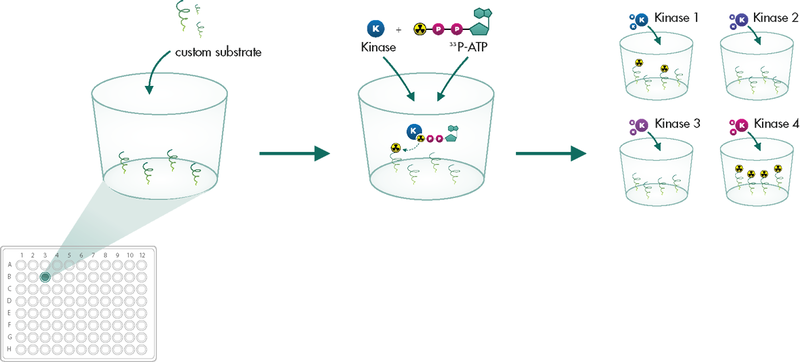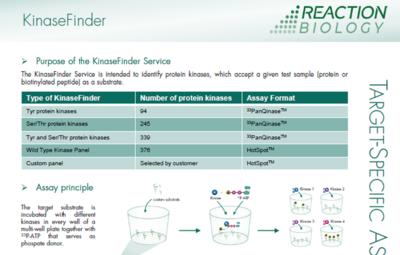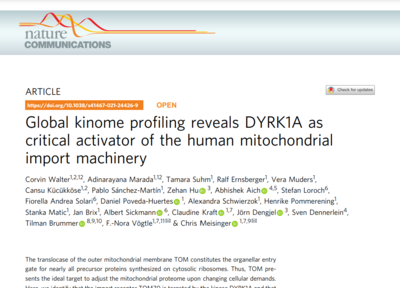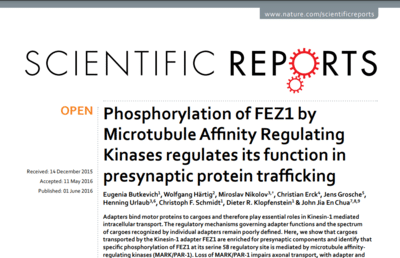The KinaseFinder Screening Service
The KinaseFinder is a biochemical assay intended to identify kinases, which accept a given substrate for phosphorylation.
The KinaseFinder is a standardized service package for identifying protein kinases that can phosphorylate a peptide or protein of interest provided by our customer. Kinase hits, identified with the standard package, should subsequently be confirmed in a second experiment. The KinaseFinder is ideal for the elucidation of physiological pathways with the involvement of protein kinases.
- Potential substrates can be peptides or proteins
- Compare peptides with phospho-site mutations
- Option to follow up with an SDS-PAGE and autoradiogram to visualize the phosphorylated substrate







